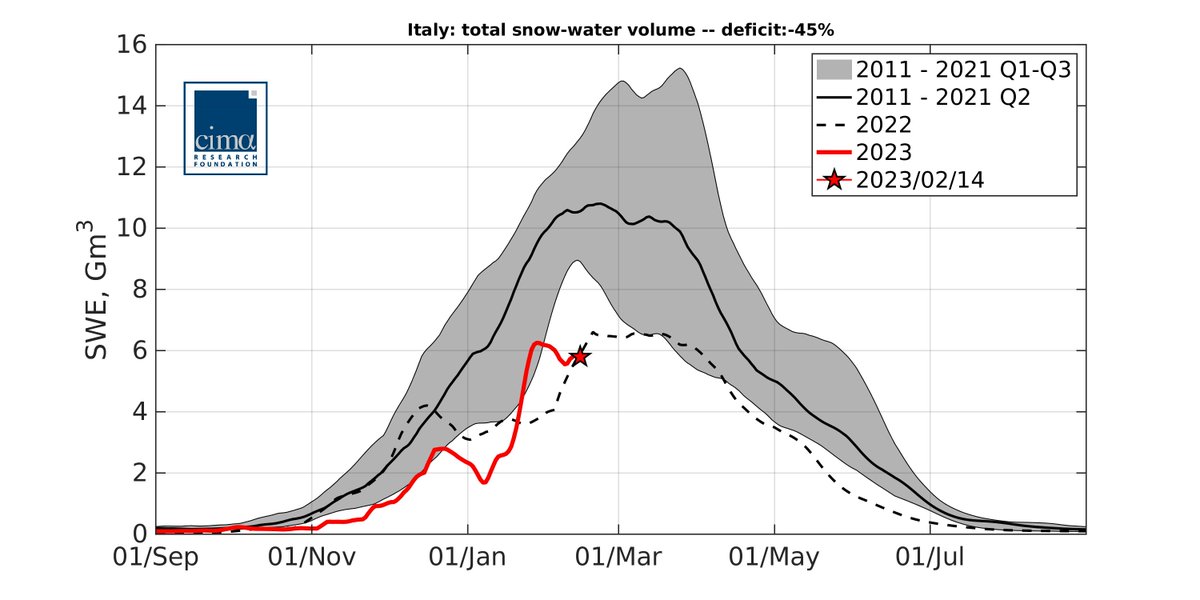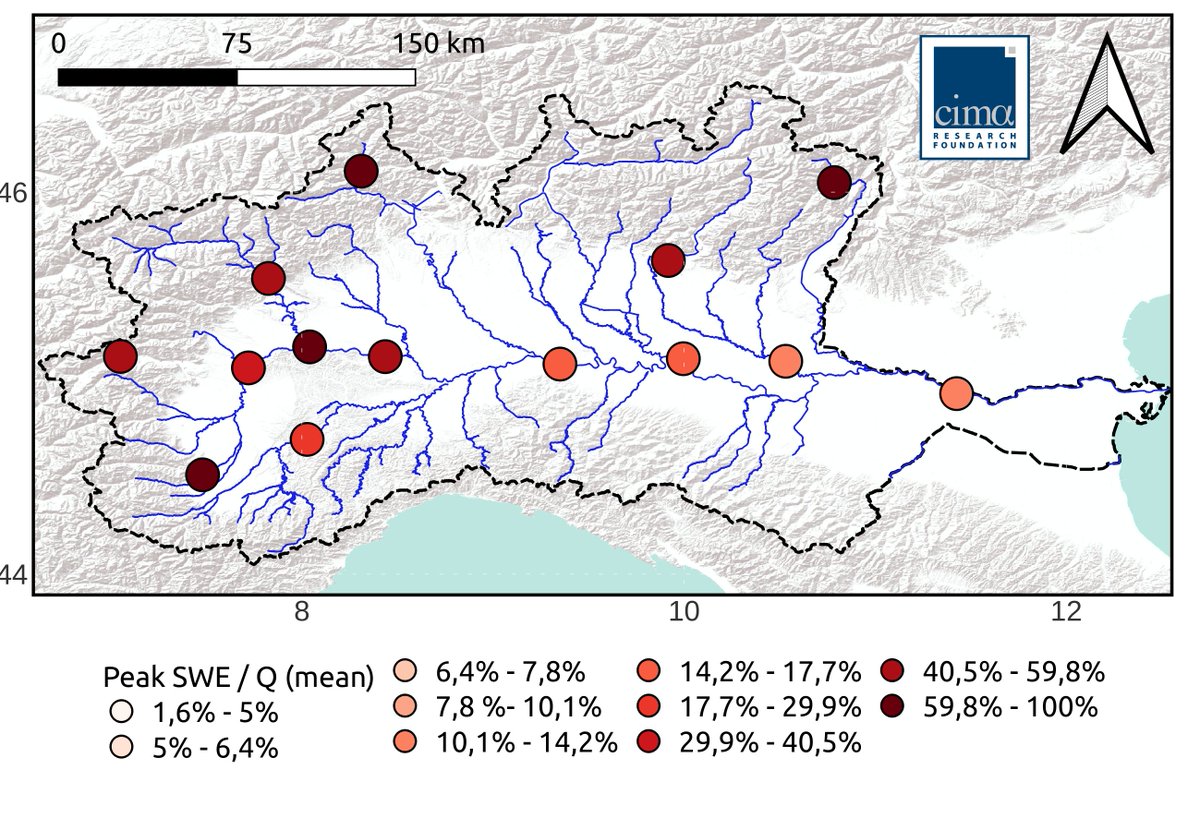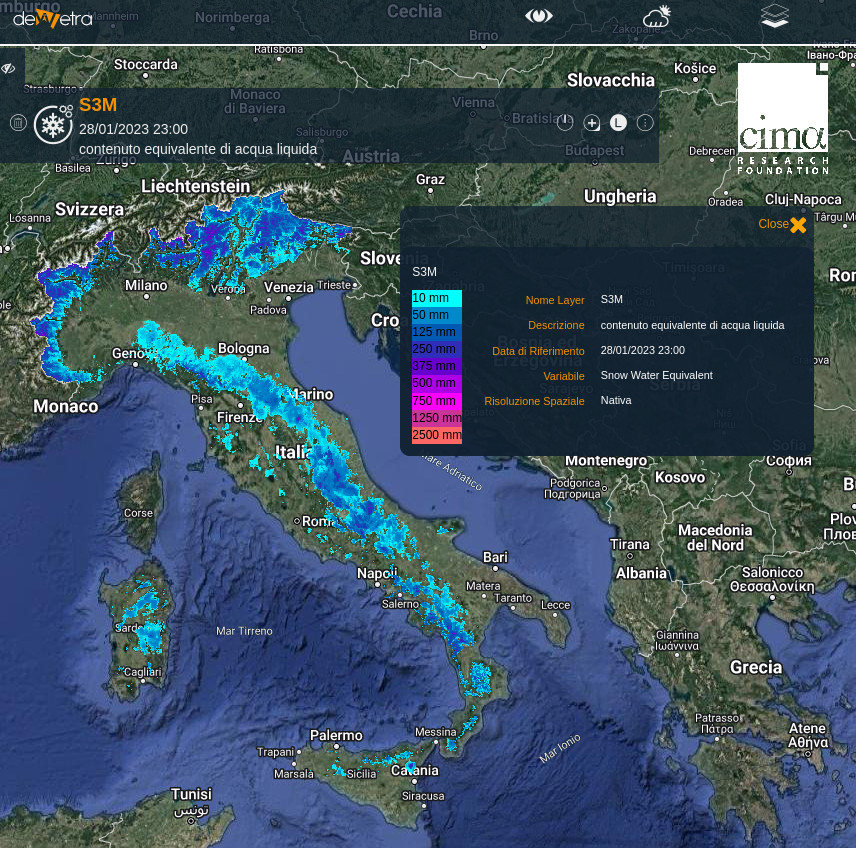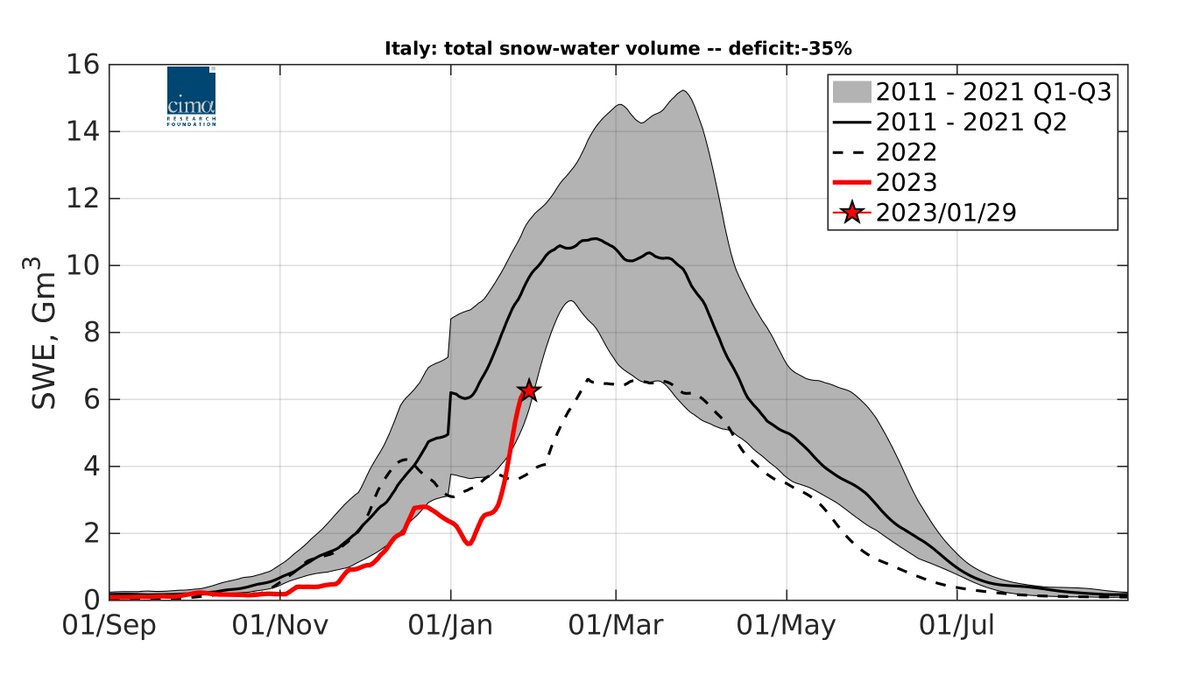
It’s mid-Feb and two more weeks have passed in the 2023 Italian #snow-season marathon. Mixed weather, with cold air but overall dry conditions – especially in the Alps.
So, how is the Italian deficit in snow-water resources doing at the moment?
A thread 👇🧵
So, how is the Italian deficit in snow-water resources doing at the moment?
A thread 👇🧵

We haven’t seen much new snow since late-January snowfalls, and thus estimate half of snow water resources at national scale compared to 2011-21 (deficit: -45%). At national scale, conditions remain similar to 2022, which was already a significant #drought year. 👇 

A recap about this plot 👆
X axis is time, from autumn to summer.
Y axis is Snow Water Equivalent, i.e., how much water we have in snow (the higher, the better).
Black line: median for 2011-2021; red line: 2023; dashed line: 2022.
X axis is time, from autumn to summer.
Y axis is Snow Water Equivalent, i.e., how much water we have in snow (the higher, the better).
Black line: median for 2011-2021; red line: 2023; dashed line: 2022.
What about Q1 and Q3 then? They are the first and third quartiles of historical SWE. If current SWE is below Q1 (like now), we are among the 25% years with lowest SWE in our 12-yr record. “Average” conditions are between Q1 and Q3, with high-snow seasons being above Q3.
Why are we still in deficit despite recent “cold” weather? Temp is one ingredient for a snow season, the second being precip. We keep seeing little of that, especially in the Alps. After a late start and a warm end of the year, this is the 3rd delay in this year’s snow marathon. 

Across the Po river basin, e.g., we have 1/3 of snow compared to the last decade. We estimate about the same snow-water resources as last year, and we are approaching the period of peak accumulation. Time for accumulating snow is running out, as snow will start melting in spring. 

The situation is only marginally better in NE Italy: we estimate half of snow water resources compared to the last decade across the Adige river. The snow deficit is larger than last year at this point, with more than half a billion cubic meter less water in snow compared to 2022 

The Po and Adige rivers host about 75% of national snow water resources at peak accumulation. Across the Po, the longest Italian river, peak snow volume can be as high as 60% or more than annual streamflow 👇
This snow deficit is water we will have (or won’t have) in summer.
This snow deficit is water we will have (or won’t have) in summer.

In central-southern Italy, instead, snow melts quickly and rarely lasts until summer. Across the Tevere river, e.g., we passed from a positive anomaly to a -34% deficit in 10 days.
Snow in areas with comp. high temp and high seasonal precip is called “maritime” – curious right?
Snow in areas with comp. high temp and high seasonal precip is called “maritime” – curious right?

Here is the current map of national snow-water resources deficit. Red means we have less snow than 2011-21. Snowfalls in late Jan have somewhat improved the situation in the south-western Alps, but the deficit is still large in north-western and central Alps. 

There are 2 variables we should keep in mind when thinking about snow&water: snow extent (where) and Snow Water Equivalent (how much). By feeding physical models with satellite images and ground measurements, IT-SNOW provides both information in real time bit.ly/3E8b2gI 

Historically, we have about one month left for accumulating snow, since peak accumulation in Italy takes place on 4 March ± 10 days. We will publish another assessment after peak-accumulation day. See you on the other side!
👉 cimafoundation.org/en/news/snow-t…
👉 cimafoundation.org/en/news/snow-t…

• • •
Missing some Tweet in this thread? You can try to
force a refresh
















